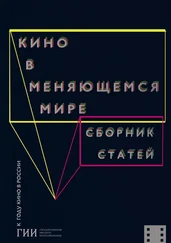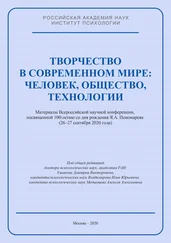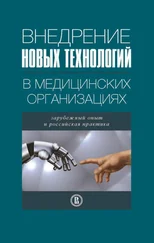1 ...6 7 8 10 11 12 ...38 However, the West’s advantage in the Balkans is characterized by its deep institutional presence (EU and/or NATO membership) and widespread economic ties (which are completely disproportionate, so that the export of the Balkan countries is predominantly EU oriented). Given that the EU and NATO have recognized China as a geopolitical challenger and Chinf l uence as a threat, it is undoubted that they will use institutional mechanisms and economic leverage to attempt to limit or squeeze China out of the Balkans.
From the perspective of the ten-year development of relations between China and the Balkan countries, this format has a perspective. At the same time, looking at the long-term interests of the EU and NATO, there are many challenges ahead.
Bastian J.The potential for growth through Chinese infrastructure investments in Central and South-Eastern Europe along the ʼBalkan Silk Roadʼ. Athens // London: Report prepared by Dr Jens Bastian for the European Bank for Reconstruction and Development (with funding from the Central European Initiative), July 2017. P. 62. (in English)
Blanchard Jean-Marc F.and Colin F.The Geopolitics of China’s Maritime Silk RoadInitiative // Geopolitics, 2017. 22 (2), 2017. Р. 223–245. (in English)
Dimitrijevíc D.and Huang Ping(Eds.). Initiatives of the ‘New Silk Road’ – Achievements and Challenges. Belgrade: Institute of International Politics and Economics, 2017. P. 529. (in English)
Ghiasy R.and Fei Su, Saalman L. The 21 st Century Maritime Silk Road: Security implications and ways forward for the European Union. Stockholm: Stockholm International Peace Research Institute – Friedrich Ebert Stiftung, 2018. P. 63. (in English)
Holzner M.and Schwarzhappel M. Infrastructure Investment in the Western Balkans, Luxembourg: European Investment Bank – Wiener Institut für Internationale Wirtschaftsvergleiche, 2018. P. 38. (in English)
Pencea S. Romania-China Trade and Investment Relations Against the Backdrop of ʼOne Belt, One Roadʼ Strategy // Romanian Economic and Business Review, 2017. Vol. 12, number 2. Р. 17–28. (in English)
Popescu L.and Brînză A. Romania-China Relations. Political and Economic Challenges in the BRI Era // Romanian Journal of European Affairs, 2018. 18 (2). Р. 20–39. (in English)
Prorokovic D. China – CEE relations need new strategies // China Daily, November 27. 2017. Р. 9. (in English)
Prorokovíc D. Geoekonomski aspekti kineske koncepcije OBOR i pozicija Srbije, Crne Gore i BiH // Nacionalni interes, 2016. XII (26), 2/2016. Р. 35–58. (in Serbian)
Prorokovíc D. Od Soluna do Sofije: zašto je slabio uticaj EU na Zapadnom Balkanu? In: Dragan Simić, Dejan Milenković, Dragan Živojinović (Eds.). Evropa za mene. Beograd: Fakultet političkih nauka – Univerzitet u Beogradu, 2018. Р. 693–702. (in Serbian)
Prorokovíc D. Pogled na Srbiju iz okvira evroatlantizma kao geopolitičkog koncepta: zašto srpski interesi nisu podudarni sa američkim ciljevima? // Politika nacionalne bezbednosti, 2018a. IX (14), 1/2018. P. 73–88. (in Serbian)
Ramasamy B.and Yeung M., Utoktham C., Duval Y. Trade and trade facilitation along the Belt and Road Initiative corridors // Working Paper Series, No. 172, Asia – Pacific Research and Training Network on Trade – UN Economic and Social Commission for Asia and the Pacific, Bangkok, 2017. Р. 9–22. (in English)
Stanzel A. Chinaʼs Investment in Influence: the future of 16 + 1 cooperation // China Analysis, Brussels: European Council on Foreign relations. 2016. P. 16. (in English)
Zhelev P. Bulgarian – Chinese economic relations in the context of 16+1 Cooperation // China – CEE Institute, 2018. Working paper No. 28. Р. 12–14. (in English)
Китайско-германские отношения в рамках инициативы «Один пояс, один путь»
ГАЛИМЗЯНОВА АЛЬБИНА КАРИМОВНА
преподаватель кафедры восточных языков Дипломатическая академия МИД России
Galaktika735@mail.ru
Данная статья посвящена анализу перспектив китайско-германского сотрудничества в рамках инициативы «Один пояс, один путь». Автор подчеркивает, что данная инициатива поможет укрепить глобальный характер двусторонних отношений, а также укрепить сотрудничество в финансовом секторе. Реализация инициативы «Один пояс, один путь» позволит Китаю и Германии сотрудничать в целях содействия стабильности и процветанию стран, расположенных вдоль Шелкового пути, таких как страны Центральной Азии. Инициатива способна объединить культуры и народы стран, расположенных вдоль Шелкового пути. Кроме того, к Шелковому пути примыкают нестабильные регионы, такие как Ближний Восток и Африка. Принимая во внимание, что Европа, и в частности Германия, страдает от притока мигрантов, Китай и Германия заинтересованы в достижении стабильности в регионе. В настоящее время существуют прямые грузовые рейсы между городами Германии и Китая, такими как Чунцин–Дуйсбург, Чжэнчжоу–Гамбург, Шэньян–Лейпциг, Пекин–Нюрнберг. Подчеркнуто, что Германия также поддерживает и принимает активное участие в строительстве Азиатского банка инфраструктурных инвестиций.
Ключевые слова: Китай, Германия, международные отношения, мировая политика, «Один пояс, один путь».
SINO-GERMAN COOPERATION UNDER THE FRAMEWORK OF THE «ONE BELT, ONE ROAD» INITIATIVE
GALIMZYANOVA ALBINA KARIMOVNA
Lecturer, Department of Oriental Languages, Diplomatic Academy of the Russian Ministry of Foreign Affairs
Galaktika735@mail.ru
Sino-German cooperation under the framework of the «One Belt, One Road» initiative can strengthen the global nature of bilateral relations, set in motion the process of bilateral trade and investments, cooperation in third country markets, as well as strengthen cooperation in the financial sector. This will benefit not only Chinese companies, European goods, services and the financial sector will also be able to develop new markets.
The implementation of the «One Belt, One Road» initiative will allow China and Germany to cooperate in order to promote the stability and prosperity of countries alongside the Silk Road Route, such as the countries of Central Asia. The initiative is able to unite the cultures and peoples of the Silk Road countries.
Читать дальше












